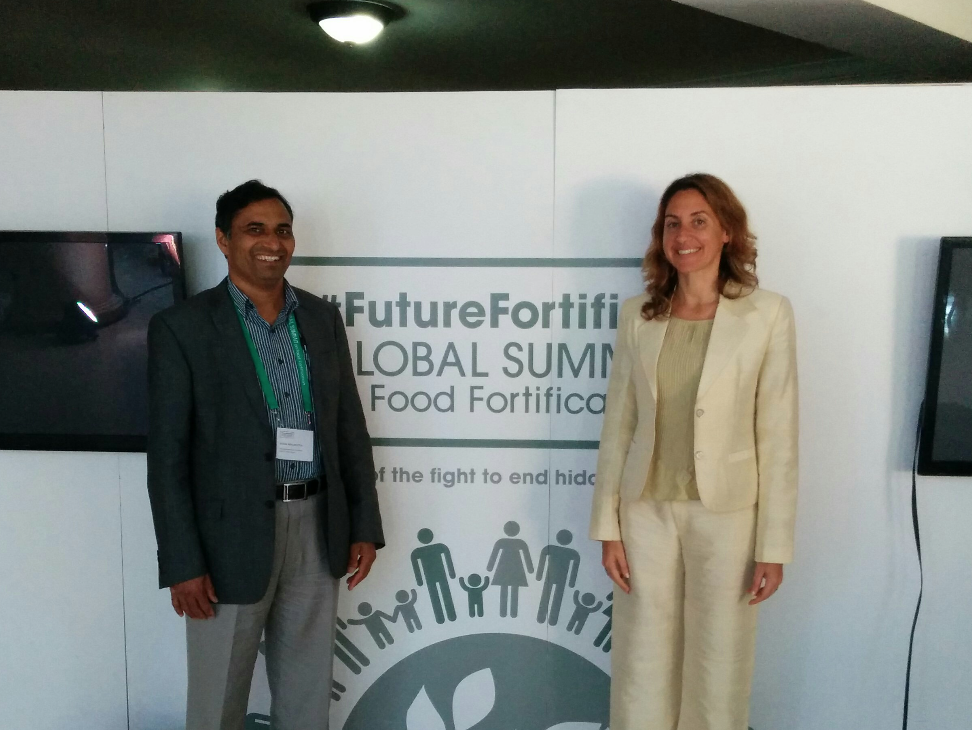
eHealth Africa was honored to participate in the first ever Global Summit on Food Fortification, September 9 - 11, 2015, held in Arusha, Tanzania. eHA was represented at the summit by Dr. Sarma C. Mallubhotla, Program Manager for Health, Nutrition, and Agriculture. The summit drew 450 delegates representing 57 countries, as well as many leaders from major businesses, academic institutions, and international organizations.
The Need For Food Fortification Worldwide
The summit began with a greeting by the Prime Minister of the United Republic of Tanzania, the Rt. Hon Mizengo Pinda. African Union Nutrition Champion HRH King Letsie III of the Kingdom of Lesotho also presented.
Dr. Chris Elias, from Bill & Melinda Gates Foundation set the tone through his keynote address “Food for Thought”: “Where do we stand after a century of fortification? Around half the population globally are malnourished and each day 805 million people go hungry.” Particularly affected are low-income population groups that do not have sufficient resources to afford a balanced diet, as well as children and pregnant and lactating women. The micronutrient deficiencies have severe consequences as the immune system is weakened and the risk of infectious diseases and subsequent mortality increases. Moreover, these deficiencies stunt growth and development, lower performance and productivity, and thus result in lowered incomes, economy, and ultimately poverty.
“Where do we stand after a century of fortification? Around half the population globally are malnourished and each day 805 million people go hungry.”
Dr. Reina Engle-Stone from the University of California Davis highlighted the need for better coordination and coherence of nutrition programs over space and time to address micronutrient malnutrition, and advocated for a “economic optimization model” to enhance coverage. According to the Copenhagen Consensus, the return on investment of food fortification is one of the highest development dividends with an estimated benefit: cost of fortification is around 30:1. Hence nutrition and fortification, truly, is one of the world’s best humanitarian investments!
eHA’s representative Dr. Mallubhotla held many meaningful discussions with leading personalities in the field of food fortification, as well as one-on-one interactions with experts from development organizations on some of the Africa-specific nutrition security issues.
“The role of ‘technology-driven’ organizations like eHealth Africa,” said Dr. Mallubhotla, “is of paramount importance in collecting right data using GIS-software platforms, and smart use of data analytics. This provides the results of nutrition programs to decision makers, and thereby enhances the enabling environment in target countries.”
As per the Arusha Statement, “Preventable deficiencies of critical vitamins and minerals such as Vitamin A, D, iron, iodine, folic acid and zinc contribute to up to 3 million child deaths annually. The best available estimates point to 2 billion people that are affected by micronutrient malnutrition, but it is highly probable that the burden is even greater, as we lack precise data.”
The Solution Food Fortification Provides
Food fortification is an effective and inexpensive solution to combat hidden hunger. The WHO estimates that, in particular, 140 to 250 million children under five years of age are suffering from vitamin A deficiency worldwide. Additionally, women with vitamin A deficiency are at a much higher risk of dying during pregnancy or childbirth.
The Food Fortification Summit also held a session on the role of fortification and the 1,000-day window with a special focus on Iodine and Folic acid. Country delegations shared their fortification experiences with highlights and key achievements.
Great efforts and investments by international development partners in low and middle-income countries have provided key experiences and lessons in the past several decades for sustainable scale-ups in food fortification to achieve maximum impact.
What It Will Take To Make It Happen
In general, education of consumers regarding the benefits of micronutrients and healthier diets are required. Although adding micronutrients to food is a relatively simple process, there are several technical, social, and economic challenges associated with implementing sustainable fortification programs in developing countries. Strong cross-sector partnerships need to be built to overcome these challenges and reach the goal of breaking down malnutrition, and the Global Food Fortification Summit was a hugely successful forum toward that goal.
